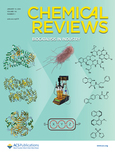
J. Šponer, G. Bussi, M. Krepl, P. Banáš, S. Bottaro, R. A. Cunha, A. Gil-Ley, G. Pinamonti, S. Poblete, P. Jurečka, N. G. Walter, M. Otyepka: RNA Structural Dynamics As Captured by Molecular Simulations: A Comprehensive Overview, CHEMICAL REVIEWS, vol. 118, sii. 8, pp. 4177–4338, 2018.
DOI: 10.1021/acs.chemrev.7b00427, IF = 54.301
Abstract: With both catalytic and genetic functions, ribonucleic acid (RNA) is perhaps the most pluripotent chemical species in molecular biology, and its functions are intimately linked to its structure and dynamics. Computer simulations, and in particular atomistic molecular dynamics (MD), allow structural dynamics of biomolecular systems to be investigated with unprecedented temporal and spatial resolution. We here provide a comprehensive overview of the fast-developing field of MD simulations of RNA molecules. We begin with an in-depth, evaluatory coverage of the most fundamental methodological challenges that set the basis for the future development of the field, in particular, the current developments and inherent physical limitations of the atomistic force fields and the recent advances in a broad spectrum of enhanced sampling methods. We also survey the closely related field of coarse-grained modeling of RNA systems. After dealing with the methodological aspects, we provide an exhaustive overview of the available RNA simulation literature, ranging from studies of the smallest RNA oligonucleotides to investigations of the entire ribosome. Our review encompasses tetranucleotides, tetraloops, a number of small RNA motifs, A-helix RNA, kissing-loop complexes, the TAR RNA element, the decoding center and other important regions of the ribosome, as well as assorted others systems. Extended sections are devoted to RNA–ion interactions, ribozymes, riboswitches, and protein/RNA complexes. Our overview is written for as broad of an audience as possible, aiming to provide a much-needed interdisciplinary bridge between computation and experiment, together with a perspective on the future of the field.
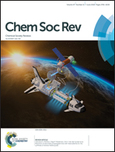
J. Tuček, P. Błoński, J. Ugolotti, A. K. Swain, T. Enoki, R. Zbořil: Emerging chemical strategies for imprinting magnetism in graphene and related 2D materials for spintronic and biomedical applications, CHEMICAL SOCIETY REVIEWS vol. 47, iss. 11, pp. 3899-3990, 2018.
DOI: 10.1039/c7cs00288b, IF = 40.443
Abstract: Graphene, a single two-dimensional sheet of carbon atoms with an arrangement mimicking the honeycomb hexagonal architecture, has captured immense interest of the scientific community since its isolation in 2004. Besides its extraordinarily high electrical conductivity and surface area, graphene shows a long spin lifetime and limited hyperfine interactions, which favors its potential exploitation in spintronic and biomedical applications, provided it can be made magnetic. However, pristine graphene is diamagnetic in nature due to solely sp2 hybridization. Thus, various attempts have been proposed to imprint magnetic features into graphene. The present review focuses on a systematic classification and physicochemical description of approaches leading to equip graphene with magnetic properties. These include introduction of point and line defects into graphene lattices, spatial confinement and edge engineering, doping of graphene lattice with foreign atoms, and sp3 functionalization. Each magnetism-imprinting strategy is discussed in detail including identification of roles of various internal and external parameters in the induced magnetic regimes, with assessment of their robustness. Moreover, emergence of magnetism in graphene analogues and related 2D materials such as transition metal dichalcogenides, metal halides, metal dinitrides, MXenes, hexagonal boron nitride, and other organic compounds is also reviewed. Since the magnetic features of graphene can be readily masked by the presence of magnetic residues from synthesis itself or sample handling, the issue of magnetic impurities and correct data interpretations is also addressed. Finally, current problems and challenges in magnetism of graphene and related 2D materials and future potential applications are also highlighted.
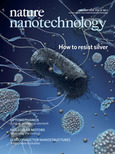
A. Panáček, L. Kvítek, M. Smékalová, R. Večeřová, M. Kolář, M. Röderová, F. Dyčka, M. Šebela, R. Prucek, O. Tomanec, R. Zbořil: Bacterial resistance to silver nanoparticles and how to overcome it, NATURE NANOTECHNOLOGY, vol. 13, iss. 1, pp. 65–71, 2018.
DOI: 10.1038/s41565-017-0013-y, IF = 33.407
Abstract: Silver nanoparticles have already been successfully applied in various biomedical and antimicrobial technologies and products used in everyday life. Although bacterial resistance to antibiotics has been extensively discussed in the literature, the possible development of resistance to silver nanoparticles has not been fully explored. We report that the Gram-negative bacteria Escherichia coli 013, Pseudomonas aeruginosa CCM 3955 and E. coli CCM 3954 can develop resistance to silver nanoparticles after repeated exposure. The resistance stems from the production of the adhesive flagellum protein flagellin, which triggers the aggregation of the nanoparticles. This resistance evolves without any genetic changes; only phenotypic change is needed to reduce the nanoparticles’ colloidal stability and thus eliminate their antibacterial activity. The resistance mechanism cannot be overcome by additional stabilization of silver nanoparticles using surfactants or polymers. It is, however, strongly suppressed by inhibiting flagellin production with pomegranate rind extract.
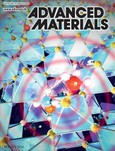
K. Jayaramulu, D. P. Dubal, B. Nagar, V. Ranc, O. Tomanec, M. Petr, K. K. R. Datta, R. Zboril, P. Gómez-Romero and R. A. Fischer, "Ultrathin Hierarchical Porous Carbon Nanosheets for High-Performance Supercapacitors and Redox Electrolyte Energy Storage," ADVANCED MATERIALS, vol. 30, iss. 15, pp. 1705789, 2019.
DOI: 10.1002/adma.201705789, IF = 25.809
Abstract: The design of advanced high‐energy‐density supercapacitors requires the design of unique materials that combine hierarchical nanoporous structures with high surface area to facilitate ion transport and excellent electrolyte permeability. Here, shape‐controlled 2D nanoporous carbon sheets (NPSs) with graphitic wall structure through the pyrolysis of metal–organic frameworks (MOFs) are developed. As a proof‐of‐concept application, the obtained NPSs are used as the electrode material for a supercapacitor. The carbon‐sheet‐based symmetric cell shows an ultrahigh Brunauer–Emmett–Teller (BET)‐area‐normalized capacitance of 21.4 µF cm−2 (233 F g−1), exceeding other carbon‐based supercapacitors. The addition of potassium iodide as redox‐active species in a sulfuric acid (supporting electrolyte) leads to the ground‐breaking enhancement in the energy density up to 90 Wh kg−1, which is higher than commercial aqueous rechargeable batteries, maintaining its superior power density. Thus, the new material provides a double profits strategy such as battery‐level energy and capacitor‐level power density.
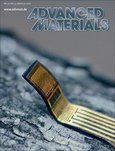
D. Li, P. Jing, L. Sun, Y. An, X. Shan, X. Lu, D. Zhou, D. Han, D. Shen, Y. Zhai, S. Qu, R. Zbořil, A. L. Rogach, "Near-Infrared Excitation/Emission and Multi-Photon-Induced Fluorescence of Carbon Dots," ADVANCED MATERIALS, vol. 30, iss. 13, no. 1705913, 2018
DOI: 10.1002/adma.201705913, IF = 25.809
Abstract: Carbon dots (CDs) have significant potential for use in various fields including biomedicine, bioimaging, and optoelectronics. However, inefficient excitation and emission of CDs in both near‐infrared (NIR‐I and NIR‐II) windows remains an issue. Solving this problem would yield significant improvement in the tissue‐penetration depth for in vivo bioimaging with CDs. Here, an NIR absorption band and enhanced NIR fluorescence are both realized through the surface engineering of CDs, exploiting electron‐acceptor groups, namely molecules or polymers rich in sulfoxide/carbonyl groups. These groups, which are bound to the outer layers and the edges of the CDs, influence the optical bandgap and promote electron transitions under NIR excitation. NIR‐imaging information encryption and in vivo NIR fluorescence imaging of the stomach of a living mouse using CDs modified with poly(vinylpyrrolidone) in aqueous solution are demonstrated. In addition, excitation by a 1400 nm femtosecond laser yields simultaneous two‐photon‐induced NIR emission and three‐photon‐induced red emission of CDs in dimethyl sulfoxide. This study represents the realization of both NIR‐I excitation and emission as well as two‐photon‐ and three‐photon‐induced fluorescence of CDs excited in an NIR‐II window, and provides a rational design approach for construction and clinical applications of CD‐based NIR imaging agents.
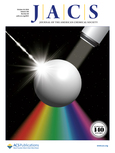
F. Queck, O. Krejčí, P. Scheuerer, F. Bolland, M.Otyepka, P.Jelínek, J. Repp: Bonding Motifs in Metal–Organic Compounds on Surfaces, JOURNAL OF THE AMERICAN CHEMICAL SOCIETY vol. 140, iss. 40, pp. 12884-12889, 2018.
DOI: 10.1021/jacs.8b06765, IF = 14.695
Abstract: The bonds in metal organic networks on surfaces govern the resulting geometry as well as the electronic properties. Here, we study the nature of these bonds by forming phenazine–copper complexes on a copper surface by means of atomic manipulation. The structures are characterized by a combination of scanning probe microscopy and density functional theory calculations. We observed an increase of the molecule–substrate distance upon covalent bond formation and an out-of-plane geometry that is in direct contradiction with the common expectation that these networks are steered by coordination bonds. Instead, we find that a complex energy balance of hybridization with the substrate, inhomogeneous Pauli repulsion, and elastic deformation drives the phenazine–copper interaction. Most remarkably, this attractive interaction is not driven by electron acceptor properties of copper but is of completely different donation/back-donation mechanism between molecular π-like orbitals and sp-like metal states. Our findings show that the nature of bonds between constituents adsorbed on surfaces does not have to follow the common categories.
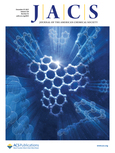
O. Stetsovych, P. Mutombo, M. Švec, M. Šámal, J. Nejedlý, I. Císařová, H. Vázquez, M. Moro-Lagares, J. Berger, J. Vacek, I. G. Stará, I. Starý, P. Jelínek: Large Converse Piezoelectric Effect Measured on a Single Molecule on a Metallic Surface, JOURNAL OF THE AMERICAN CHEMICAL SOCIETY, vol. 140, iss. 3, pp. 940–946, 2018, 2018.
DOI: 10.1021/jacs.7b08729, IF = 14.695
Abstract: The converse piezoelectric effect is a phenomenon in which the mechanical strain is generated in a material due to an applied electrical field. In this work, we demonstrate the converse piezoelectric effect in single heptahelicene-derived molecules on the Ag(111) surface using atomic force microscopy (AFM) and total energy density functional (DFT) calculations. The force-distance spectroscopy acquired over a wide range of bias voltages reveals a linear shift of the tip-sample distance at which the contact between the molecule and tip apex is established. We demonstrate that this effect is caused by the bias-induced de-formation of the spring-like scaffold of the helical polyaromatic molecules. We attribute this effect to coupling of a soft vibrational mode of the molecular helix with a vertical electric dipole induced by molecule-substrate charge transfer. In addi-tion, we also performed the same spectroscopic measurements on a more rigid o-carborane dithiol molecule on the Ag(111) surface. In this case, we identify a weaker linear electromechanical response, which underpins the importance of the helical scaffold on the observed piezoelectric response.
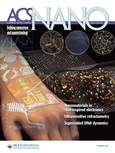
J.Tuček, K.Holá, G.Zoppellaro, P.Błoński, R. Langer, M. Medved’, T. Susi, M.Otyepka, R.Zbořil: Zigzag sp2 Carbon Chains Passing through an sp3 Framework: A Driving Force toward Room-Temperature Ferromagnetic Graphene, ACS NANO, vol. 12, iss. 12, pp. 12847–12859, 2018.
DOI: 10.1021/acsnano.8b08052, IF = 13.903
Abstract: Stabilization of ferromagnetic ordering in graphene-based systems up to room temperature remains an important challenge owing to the huge scope for applications in electronics, spintronics, biomedicine, and separation technologies. To date, several strategies have been proposed, including edge engineering, introduction of defects and dopants, and covalent functionalization. However, these techniques are usually hampered by limited temperature sustainability of ferromagnetic ordering. Here, we describe a method for the well-controlled sp3 functionalization of graphene to synthesize zigzag conjugated sp2 carbon chains that can act as communication pathways among radical motifs. Zigzag sp2/sp3 patterns in the basal plane were clearly observed by high-resolution scanning transmission electron microscopy and provided a suitable matrix for stabilization of ferromagnetic ordering up to room temperature due to combined contributions of itinerant π-electrons and superexchange interactions. The results highlight the principal role of sp2/sp3 ratio and superorganization of radical motifs in graphene for generating room-temperature nonmetallic magnets.
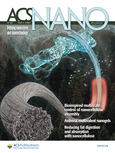
X. Yang, J. Wang, S. Wang, H. Wang, O. Tomanec, C. Zhi, R. Zboril, D. Y. W. Yu, A. Rogach: Vapor-Infiltration Approach toward Selenium/Reduced Graphene Oxide Composites Enabling Stable and High-Capacity Sodium Storage, ACS NANO vol. 12, iss. 7, pp. 7397-7405, 2018.
DOI: 10.1021/acsnano.8b04114, IF = 13.903
Abstract: Emerging sodium–selenium batteries suffer from volume expansion of the selenium cathode and shuttling effects of soluble intermediates. Confining selenium within the carbon matrix is the most adopted strategy to address these two issues, which is generally realized via a melt-infusion method. Herein, we developed a vapor-infiltration method to fabricate selenium/carbon composites that are advantageous over the melt-infusion route in terms of several aspects: it relieves the requirement of intensive mechanical mixing and simplifies the ratio optimization between selenium and carbon; it avoids selenium aggregation and makes it possible to utilize all of the surface and pores of the carbon host. Utilizing this method, we fabricated a selenium/graphene composite from thermally reduced graphene oxide with a selenium loading equal to 71 wt %, thus approaching the record value. The obtained composite achieved the highest reported to date initial Coulombic efficiency of 88% among various selenium cathodes, with superior rate and cycle performance (410 and 367 mA h g–1 at 0.1 and 1 A g–1; capacity decay <10% after 800 cycles at 2 A g–1) enabled by the supporting graphene framework and the use of the ether electrolyte. In view of the distinct advantages of the vapor-infiltration method and the significant influence of the ether electrolyte on both initial Coulombic efficiency and cyclability of the batteries, we believe the introduced approach will be frequently adopted to incorporate selenium into various host materials, and the ether electrolyte will be widely considered for selenium-based electrodes.
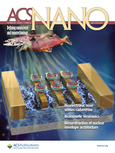
C. C. Mayorga-Martinez, Z. Sofer, J. Luxa, Š. Huber, D. Sedmidubský, P. Brázda, L. Palatinus, M. Mikulics, P. Lazar, R. Medlín, M. Pumera: TaS3 Nanofibers: Layered Trichalcogenide for High-Performance Electronic and Sensing Devices, ACS NANO, vol. 12, iss. 1, pp. 464–473, 2018.
DOI: 10.1021/acsnano.7b06853, IF = 13.903
Abstract: Layered materials, like transition metal dichalcogenides, exhibit broad spectra with outstanding properties with huge application potential, whereas another group of related materials, layered transition metal trichalcogenides, remains unexplored. Here, we show the broad application potential of this interesting structural type of layered tantalum trisulfide prepared in a form of nanofibers. This material shows tailorable attractive electronic properties dependent on the tensile strain applied to it. Structure of this so-called orthorhombic phase of TaS3 grown in a form of long nanofibers has been solved and refined. Taking advantage of these capabilities, we demonstrate a highly specific impedimetric NO gas sensor based on TaS3 nanofibers as well as construction of photodetectors with excellent responsivity and field-effe ct transistors. Various flexible substrates were used for the construction of a NO gas sensor. Such a device exhibits a low limit of detection of 0.48 ppb, well under the allowed value set by environmental agencies for NOx (50 ppb). Moreover, this NO gas sensor also showed excellent selectivity in the presence of common interferences formed during fuel combustion. TaS3 nanofibers produced in large scale exhibited excellent broad application potential for various types of devices covering nanoelectronic, optoelectronic, and gas-sensing applications.

X. Bao, Y. Yuan, J. Chen, B. Zhang, D. Li, D. Zhou, P. Jing, G. Xu, Y. Wang, K.Holá, D. Shen, C. Wu, L. Song, C. Liu, R.Zbořil, S. Qu: In vivo h near-infrared-emitting carbon dots—highly efficient photothermal therapy based on passive targeting after intravenous administration, LIGHT: SCIENCE & APPLICATIONS vol. 7, iss. 1, 2018.
DOI: 10.1038/s41377-018-0090-1, IF = 14.000
Abstract: Carbon dots that exhibit near-infrared fluorescence (NIR CDs) are considered emerging nanomaterials for advanced biomedical applications with low toxicity and superior photostability and targeting compared to currently used photoluminescence agents. Despite progress in the synthesis of NIR CDs, there remains a key obstacle to using them as an in vivo theranostic agent. This work demonstrates that the newly developed sulfur and nitrogen codoped NIR CDs are highly efficient in photothermal therapy (PTT) in mouse models (conversion efficiency of 59%) and can be readily visualized by photoluminescence and photoacoustic imaging. The real theranostic potential of NIR CDs is enhanced by their unique biodistribution and targeting. Contrary to all other nanomaterials that have been tested in biomedicine, they are excreted through the body’s renal filtration system. Moreover, after intravenous injection, NIR CDs are accumulated in tumor tissue via passive targeting, without any active species such as antibodies. Due to their accumulation in tumor tissue without the need for intratumor injection, high photothermal conversion, excellent optical and photoacoustic imaging performance, and renal excretion, the developed CDs are suitable for transfer to clinical biomedical practice.
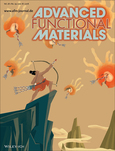
A. Bakandritsos, D. D. Chronopoulos, P. Jakubec, M. Pykal, K. Čépe, T. Steriotis, S. Kalytchuk, M. Petr, R. Zbořil, M. Otyepka: High-Performance Supercapacitors Based on a Zwitterionic Network of Covalently Functionalized Graphene with Iron Tetraaminophthalocyanine, ADVANCED FUNCTIONAL MATERIALS vol. 28, iss. 29, pp. 1801111, 2018.
DOI: 10.1002/adfm.201801111, IF = 15.621
Abstract: The design of advanced high‐energy‐density supercapacitors requires the design of unique materials that combine hierarchical nanoporous structures with high surface area to facilitate ion transport and excellent electrolyte permeability. Here, shape‐controlled 2D nanoporous carbon sheets (NPSs) with graphitic wall structure through the pyrolysis of metal–organic frameworks (MOFs) are developed. As a proof‐of‐concept application, the obtained NPSs are used as the electrode material for a supercapacitor. The carbon‐sheet‐based symmetric cell shows an ultrahigh Brunauer–Emmett–Teller (BET)‐area‐normalized capacitance of 21.4 µF cm−2 (233 F g−1), exceeding other carbon‐based supercapacitors. The addition of potassium iodide as redox‐active species in a sulfuric acid (supporting electrolyte) leads to the ground‐breaking enhancement in the energy density up to 90 Wh kg−1, which is higher than commercial aqueous rechargeable batteries, maintaining its superior power density. Thus, the new material provides a double profits strategy such as battery‐level energy and capacitor‐level power density.
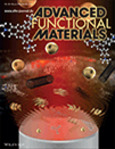
J. Tuček, P. Błoński, O. Malina, M. Pumera, C. K. Chua, M. Otyepka, and R. Zbořil: Morphology-Dependent Magnetism in Nanographene: Beyond Nanoribbons, ADVANCED FUNCTIONAL MATERIALS, vol. 28, iss. 22, no. 1800592, 2018, 2018.
DOI: 10.1002/adfm.201800592, IF = 15.621
Abstract: Imprinting self‐sustainable magnetic features into graphene has recently generated much interest owing to its potential application in spintronics. Several strategies for imprinting magnetic features into graphene are proposed theoretically. However, only a few of them are realized experimentally. Here, the first scalable synthesis of magnetic graphene nanoplatelets with diverse morphologies, including nanoribbons and triangular, pentagonal, hexagonal, and other polyhedral shapes, is reported. This material enters the ferromagnetic regime at a temperature of ≈37 K with magnetization approaching ≈0.45 emu g−1 under high external magnetic fields. Theoretical calculations are used to explain this sort of morphology‐driven magnetism of graphene nanoplatelets, which emerges from the synergistic effects of the size, geometry of nanographenes, edge terminations, and angle between adjacent edges. In addition, they suggest a new way for preparing magnetically ordered graphene nanoplatelets with a higher transition temperature. In this respect, triangular motifs with zigzag edges represent the most promising morphology of graphene nanoplatelets, which can remain magnetically ordered up to ≈107 K. Based on these challenging results, further tuning of the size and morphology in spatially confined nanographenes combined with doping and sp3 functionalization will enable the preparation of magnetically ordered half‐metallic carbon sustainable up to room temperature, thus opening new opportunities in spintronics.

K. Jayaramulu, J. Masa, D.M. Morales, O.Tomanec, V.Ranc, M.Petr, P. Wilde, Y. Chen, R.Zboril, W. Schuhmann, R.A. Fischer: Ultrathin 2D Cobalt Zeolite-Imidazole Framework Nanosheets for Electrocatalytic Oxygen Evolution, ADVANCED SCIENCE vol. 5, iss. 11, no. 1801029, 2018.
DOI: 10.1002/advs.201801029, IF = 15.804
Abstract: D layered materials, including metal‐di‐chalcogenides and transition metal layered double hydroxides, among others, are intensively studied because of new properties that emerge from their 2D confinement, which are attractive for advanced applications. Herein, 2D cobalt ion (Co2+) and benzimidazole (bIm) based zeolite‐imidazole framework nanosheets, ZIF‐9(III), are reported as exceptionally efficient electrocatalysts for the oxygen evolution reaction (OER). Specifically, liquid‐phase ultrasonication is applied to exfoliate a [Co4(bIm)16] zeolite‐imidazole framework (ZIF), named as ZIF‐9(III) phase, into nanoscale sheets. ZIF‐9(III) is selectively prepared through simple mechanical grinding of cobalt nitrate and benzimidazole in the presence of a small amount of ethanol. The resultant exfoliated nanosheets exhibit significantly higher OER activity in alkaline conditions than the corresponding bulk phases ZIF‐9 and ZIF‐9(III). The electrochemical and physicochemical characterization data support the assignment of the OER activity of the exfoliated nanosheet derived material to nitrogen coordinated cobalt oxyhydroxide N4CoOOH sites, following a mechanism known for Co‐porphyrin and related systems. Thus, exfoliated 2D nanosheets hold promise as potential alternatives to commercial noble metal electrocatalysts for the OER.

C. Krull, M. Castelli, P. Hapala, D. Kumar, A. Tadich, M. Capsoni, M. T. Edmonds, J. Hellerstedt, S. A. Burke, P. Jelinek, A. Schiffrin: Iron-based trinuclear metal-organic nanostructures on a surface with local charge accumulation, NATURE COMMUNICATIONS vol. 9, p.3211, 2018.
DOI: 10.1038/s41467-018-05543-4, IF = 11.878
Abstract: Coordination chemistry relies on harnessing active metal sites within organic matrices. Polynuclear complexes—where organic ligands bind to several metal atoms—are relevant due to their electronic/magnetic properties and potential for functional reactivity pathways. However, their synthesis remains challenging; few geometries and configurations have been achieved. Here, we synthesise—via supramolecular chemistry on a noble metal surface—one-dimensional metal-organic nanostructures composed of terpyridine (tpy)-based molecules coordinated with well-defined polynuclear iron clusters. Combining low-temperature scanning probe microscopy and density functional theory, we demonstrate that the coordination motif consists of coplanar tpyʼs linked via a quasi-linear tri-iron node in a mixed (positive-)valence metal–metal bond configuration. This unusual linkage is stabilised by local accumulation of electrons between cations, ligand and surface. The latter, enabled by bottom-up on-surface synthesis, yields an electronic structure that hints at a chemically active polynuclear metal centre, paving the way for nanomaterials with novel catalytic/magnetic functionalities.

B. de la Torre, M. Švec, P. Hapala, J. Redondo, O. Krejčí, R. Lo, D. Manna, A. Sarmah, D. Nachtigallová, J. Tuček, P. Błoński, M. Otyepka, R. Zbořil, P. Hobza, P. Jelínek: Non-covalent control of spin-state in metal-organic complex by positioning on N-doped graphene, NATURE COMMUNICATIONS vol. 9, p.2831, 2018.
DOI: 10.1038/s41467-018-05163-y, IF = 11.878
Abstract: Nitrogen doping of graphene significantly affects its chemical properties, which is particularly important in molecular sensing and electrocatalysis applications. However, detailed insight into interaction between N-dopant and molecules at the atomic scale is currently lacking. Here we demonstrate control over the spin state of a single iron(II) phthalocyanine molecule by its positioning on N-doped graphene. The spin transition was driven by weak intermixing between orbitals with z-component of N-dopant (pz of N-dopant) and molecule (dxz, dyz, dz2) with subsequent reordering of the Fe d-orbitals. The transition was accompanied by an electron density redistribution within the molecule, sensed by atomic force microscopy with CO-functionalized tip. This demonstrates the unique capability of the high-resolution imaging technique to discriminate between different spin states of single molecules. Moreover, we present a method for triggering spin state transitions and tuning the electronic properties of molecules through weak non-covalent interaction with suitably functionalized graphene.

J. Peng, J. Guo, P. Hapala, D. Cao, R. Ma, B. Cheng, L. Xu, M. Ondráček, P. Jelínek, E. Wang, Y. Jiang: Weakly perturbative imaging of interfacial water with submolecular resolution by atomic force microscopy, NATURE COMMUNICATIONS vol. 9, p.122, 2018.
DOI: 10.1038/s41467-017-02635-5, IF = 11.878
Abstract: Scanning probe microscopy has been extensively applied to probe interfacial water in many interdisciplinary fields but the disturbance of the probes on the hydrogen-bonding structure of water has remained an intractable problem. Here, we report submolecular-resolution imaging of the water clusters on a NaCl(001) surface within the nearly noninvasive region by a qPlus-based noncontact atomic force microscopy. Comparison with theoretical simulations reveals that the key lies in probing the weak high-order electrostatic force between the quadrupole-like CO-terminated tip and the polar water molecules at large tip–water distances. This interaction allows the imaging and structural determination of the weakly bonded water clusters and even of their metastable states with negligible disturbance. This work may open an avenue for studying the intrinsic structure and dynamics of ice or water on surfaces, ion hydration, and biological water with atomic precision.
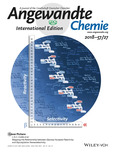
M. M. Lerch, M. Di Donato, A. D. Laurent, M. Medved', A. Iagatti, L. Bussotti, A. Lapini, W. J. Buma, P. Foggi, W. Szymański, B. L. Feringa: Solvent Effects on the Actinic Step of Donor-Acceptor Stenhouse Adduct Photoswitching, ANGEWANDTE CHEMIE INTERNATIONAL EDITION vol. 57, iss. 27, pp. 8063-8068, 2018.
DOI: 10.1002/anie.201803058, IF = 12.102
Abstract: Donor–acceptor Stenhouse adducts (DASAs) are negative photochromes that switch with visible light and are highly promising for applications ranging from smart materials to biological systems. However, the strong solvent dependence of the photoswitching kinetics limits their application. The nature of the photoswitching mechanism in different solvents is key for addressing the solvatochromism of DASAs, but as yet has remained elusive. Here, we employ spectroscopic analyses and TD‐DFT calculations to reveal changing solvatochromic shifts and energies of the species involved in DASA photoswitching. Time‐resolved visible pump‐probe spectroscopy suggests that the primary photochemical step remains the same, irrespective of the polarity and protic nature of the solvent. Disentangling the different factors determining the solvent‐dependence of DASA photoswitching, presented here, is crucial for the rational development of applications in a wide range of different media.
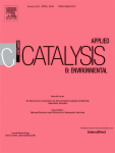
A. Halder, M. Kilianová, B. Yang, E. C. Tyo, S. Seifert, R. Prucek, A. Panáček, P. Suchomel, O. Tomanec, D. J. Gosztola, D. Milde, H. Wang, L. Kvítek, R. Zbořil, S. Vajda: Highly efficient Cu-decorated iron oxide nanocatalyst for low pressure CO 2 conversion, APPLIED CATALYSIS B: ENVIRONMENTAL vol. 225, pp. 128-138, 2017.
DOI: 10.1016/j.apcatb.2017.11.047, IF = 14.229
Abstract: We report a nanoparticulate iron oxide based catalyst for CO2 conversion with high efficiency at low pressures and on the effect of the presence of copper on the catalyst’s restructuring and its catalytic performance. In situ X-ray scattering reveals the restructuring of the catalyst at the nanometer scale. In situ X-ray absorption near edge structure (XANES) shows the evolution of the composition and oxidation state of the iron and copper components under reaction conditions along with the promotional effect of copper on the chemical transformation of the iron component. X-ray diffraction (XRD), XANES and Raman spectroscopy proved that the starting nanocatalyst is composed of iron oxides differing in chemical nature (α-Fe2O3, Fe3O4, FeO(OH)) and dimensionality, while the catalyst after CO2 conversion was identified as a mixture of α-Fe, Fe3C, and traces of Fe5C2. The significant increase of the rate CO2 is turned over in the presence of copper nanoparticles indicates that Cu nanoparticles activate hydrogen, which after spilling over to the neighbouring iron sites, facilitate a more efficient conversion of carbon dioxide.

Y. Huang, C. Han, Y. Liu, M. N. Nadagouda, L. Machala, K. E. O’Shea, V. K. Sharma, D. D. Dionysiou: Degradation of atrazine by ZnxCu1−xFe2O4 nanomaterial-catalyzed sulfite under UV–vis light irradiation: Green strategy to generate SO4·−, APPLIED CATALYSIS B: ENVIRONMENTAL vol. 221, pp. 380-392, 2018.
DOI: 10.1016/j.apcatb.2017.09.001, IF = 14.229
Abstract: Degradation of atrazine, a widely-used herbicide, by a novel advanced oxidation process was investigated through photo-catalyzing sulfite, the precursor of sulfate radical (SO4·−) in this study, by zinc-copper ferrites (ZnxCu1−xFe2O4) under UV–vis light irradiation. The ZnxCu1−xFe2O4 with different ratios of Zn to Cu was synthesized through a facile sol-gel combustion method, and characterized by X-ray powder diffractometry, scanning electron microscopy, transmission electron microscopy, porosimetry, and UV–vis diffuse reflectance spectroscopy, and by a vibrating sample magnetometer and Mössbauer spectrometer. The Zn0.8Cu0.2Fe2O4 demonstrated the highest photocatalytic ability to activate sulfite for the degradation of atrazine under current experimental conditions. The sulfate radical generated in the UV–vis light/Zn0.8Cu0.2Fe2O4/sulfite system was identified as the main reactive species through radical quenching experiments and measuring two important byproducts (atrazine-desethyl and atrazine-desisopropyl). The XPS spectra of fresh and used catalysts were analyzed to further elucidate the reaction mechanisms. There are two possible approaches to produce SO4·−: the oxidation of sulfite by photo-generated holes and the accelerated decomposition of metal-sulfito complexes (Fe(III)-sulfito and Cu(II)-sulfito) on the surface of Zn0.8Cu0.2Fe2O4. Based on the detected byproducts, the transformation pathways of atrazine by UV–vis light/Zn0.8Cu0.2Fe2O4/sulfite were proposed as well. After the complete decomposition of atrazine, the used catalysts could be magnetically recovered using a magnet and no sulfite remained in the system. The results suggest that the UV–vis light/Zn0.8Cu0.2Fe2O4/sulfite system is a “green” advanced oxidation technology for future application in wastewater treatment.
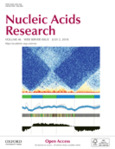
L. Pravda, D. Sehnal, D. Toušek, V.Navrátilová, V.Bazgier, K.Berka, R. Svobodová Vařeková, J. Koča, M.Otyepka: MOLEonline: a web-based tool for analyzing channels, tunnels and pores (2018 update), NUCLEIC ACIDS RESEARCH vol. 46, iss. W1, pp. W368-W373, 2018.
DOI: 10.1093/nar/gky309, IF = 11.147
Abstract: MOLEonline is an interactive, web-based application for the detection and characterization of channels (pores and tunnels) within biomacromolecular structures. The updated version of MOLEonline overcomes limitations of the previous version by incorporating the recently developed LiteMol Viewer visualization engine and providing a simple, fully interactive user experience. The application enables two modes of calculation: one is dedicated to the analysis of channels while the other was specifically designed for transmembrane pores. As the application can use both PDB and mmCIF formats, it can be leveraged to analyze a wide spectrum of biomacromolecular structures, e.g. stemming from NMR, X-ray and cryo-EM techniques. The tool is interconnected with other bioinformatics tools (e.g., PDBe, CSA, ChannelsDB, OPM, UniProt) to help both setup and the analysis of acquired results. MOLEonline provides unprecedented analytics for the detection and structural characterization of channels, as well as information about their numerous physicochemical features. Here we present the application of MOLEonline for structural analyses of α-hemolysin and transient receptor potential mucolipin 1 (TRMP1) pores. The MOLEonline application is freely available via the Internet at https://mole.upol.cz.
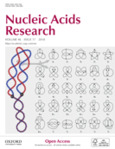
M. Havrila, P.Stadlbauer, P.Kührová, P.Banáš, J. Mergny, M.Otyepka, J.Šponer: Structural dynamics of propeller loop: towards folding of RNA G-quadruplex, NUCLEIC ACIDS RESEARCH vol. 46, iss. 17, pp. 8754-8771, 2018.
DOI: 10.1093/nar/gky712, IF = 11.147
Abstract: We have carried out an extended set of standard and enhanced-sampling MD simulations (for a cumulative simulation time of 620 μs) with the aim to study folding landscapes of the rGGGUUAGGG and rGGGAGGG parallel G-hairpins (PH) with propeller loop. We identify folding and unfolding pathways of the PH, which is bridged with the unfolded state via an ensemble of cross-like structures (CS) possessing mutually tilted or perpendicular G-strands interacting via guanine-guanine H-bonding. The oligonucleotides reach the PH conformation from the unfolded state via a conformational diffusion through the folding landscape, i.e. as a series of rearrangements of the H-bond interactions starting from compacted anti-parallel hairpin-like structures. Although isolated PHs do not appear to be thermodynamically stable we suggest that CS and PH-types of structures are sufficiently populated during RNA guanine quadruplex (GQ) folding within the context of complete GQ-forming sequences. These structures may participate in compact coil-like ensembles that involve all four G-strands and already some bound ions. Such ensembles can then rearrange into the fully folded parallel GQs via conformational diffusion. We propose that the basic atomistic folding mechanism of propeller loops suggested in this work may be common for their formation in RNA and DNA GQs.
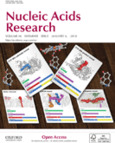
L. Pravda, D. Sehnal, R. Svobodová Vařeková, V. Navrátilová, D. Toušek, K. Berka, M. Otyepka, J. Koča: ChannelsDB: database of biomacromolecular tunnels and pores, NUCLEIC ACIDS RESEARCH vol. 46, iss. D1, pp. D399-D405, 2018.
DOI: 10.1093/nar/gkx868, IF = 11.147
Abstract: ChannelsDB (http://ncbr.muni.cz/ChannelsDB) is a database providing information about the positions, geometry and physicochemical properties of channels (pores and tunnels) found within biomacromolecular structures deposited in the Protein Data Bank. Channels were deposited from two sources; from literature using manual deposition and from a software tool automatically detecting tunnels leading to the enzymatic active sites and selected cofactors, and transmembrane pores. The database stores information about geometrical features (e.g. length and radius profile along a channel) and physicochemical properties involving polarity, hydrophobicity, hydropathy, charge and mutability. The stored data are interlinked with available UniProt annotation data mapping known mutation effects to channel-lining residues. All structures with channels are displayed in a clear interactive manner, further facilitating data manipulation and interpretation. As such, ChannelsDB provides an invaluable resource for research related to deciphering the biological function of biomacromolecular channels.
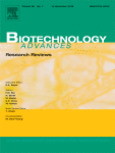
V. V. Padil, S. Wacławek, M. Černík, R. S. Varma: Tree gum-based renewable materials: Sustainable applications in nanotechnology, biomedical and environmental fields, BIOTECHNOLOGY ADVANCES vol. 36, iss. 7, pp. 1984-2016, 2018.
DOI: 10.1016/j.biotechadv.2018.08.008, IF = 12.831
Abstract: The prospective uses of tree gum polysaccharides and their nanostructures in various aspects of food, water, energy, biotechnology, environment and medicine industries, have garnered a great deal of attention recently. In addition to extensive applications of tree gums in food, there are substantial non-food applications of these commercial gums, which have gained widespread attention due to their availability, structural diversity and remarkable properties as ‘green’ bio-based renewable materials. Tree gums are obtainable as natural polysaccharides from various tree genera possessing exceptional properties, including their renewable, biocompatible, biodegradable, and non-toxic nature and their ability to undergo easy chemical modifications. This review focuses on non-food applications of several important commercially available gums (arabic, karaya, tragacanth, ghatti and kondagogu) for the greener synthesis and stabilization of metal/metal oxide NPs, production of electrospun fibers, environmental bioremediation, bio-catalysis, biosensors, coordination complexes of metal–hydrogels, and for antimicrobial and biomedical applications. Furthermore, polysaccharides acquired from botanical, seaweed, animal, and microbial origins are briefly compared with the characteristics of tree gum exudates.
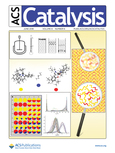
D. Spanu, S. Recchia, S. Mohajernia, O. Tomanec, Š. Kment, R. Zboril, P. Schmuki, M. Altomare: Templated Dewetting–Alloying of NiCu Bilayers on TiO2 Nanotubes Enables Efficient Noble-Metal-Free Photocatalytic H2 Evolution, ACS CATALYSIS vol. 8, iss. 6, pp. 5298-5305, 2018.
DOI: 10.1021/acscatal.8b01190, IF = 12.221
Abstract: Photocatalytic H2 evolution reactions on pristine TiO2 is characterized by low efficiencies that are due to trapping and recombination of charge carriers and due to a sluggish kinetics of electron transfer. Noble-metal (mainly Pt, Pd, Au) nanoparticles are typically decorated as co-catalysts on the TiO2 surface to reach reasonable photocatalytic yields. However, because of the high cost of noble metals, alternative metal co-catalysts are being developed. Here, we introduce an approach to fabricate an efficient noble-metal-free photocatalytic platform for H2 evolution based on alloyed NiCu co-catalytic nanoparticles at the surface of anodic TiO2 nanotube arrays. NiCu bilayers are deposited onto the TiO2 nanotubes by plasma sputtering. A subsequent thermal treatment is carried out that leads to dewetting, that is, because of surface diffusion, the Ni- and Cu-sputtered layers simultaneously mix with each other while splitting into NiCu nanoparticles at the nanotube surface. The approach allows for a full control over key features of the alloyed nanoparticles, such as their composition, work function, and co-catalytic ability toward H2 generation. Dewetted–alloyed co-catalytic nanoparticles composed of equal Ni and Cu amounts not only are significantly more reactive than pure Ni or Cu nanoparticles, but also lead to H2 generation rates that can be comparable to those obtained by conventional noble-metal (Pt) decoration of TiO2 nanotube arrays.
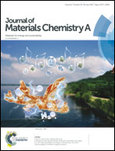
N. T. Nguyen, S. Ozkan, O. Tomanec, X. Zhou, R. Zboril, P. Schmuki: Nanoporous AuPt and AuPtAg alloy co-catalysts formed by dewetting–dealloying on an ordered TiO2 nanotube surface lead to significantly enhanced photocatalytic H2 generation, JOURNAL OF MATERIALS CHEMISTRY A vol. 6, iss. 28, pp. 13599-13606, 2018.
DOI: 10.1039/c8ta04495c, IF = 10.733
Abstract: Effective co-catalysts are of key importance for photocatalytic H2 generation from aqueous environments. AuPt (metastable) alloys are an attractive co-catalyst candidate due to the synergistic electronic and chemical interaction of the constituents in the charge transfer and H2 evolution processes. Here we introduce the fabrication of AuPt alloy nanoparticles with nanoporosity (pore size of 2–5 nm) on spaced TiO2 nanotubes. By dewetting a layered AgAuPt coating, we form AuPtAg alloy nanoparticles. From these alloys, Ag can selectively be dissolved leading to the desired nanoporous AuPt alloy particles with diameters in the range of 10–70 nm deposited as a gradient on the TiO2 nanotubes. A significant enhancement of photocatalytic H2 generation is obtained compared to that with the same loading of monometallic or nonporous alloys. The nanoporous AuPt particles not only provide a large surface area to volume ratio (and are thus more effective) but also show the intrinsic synergy of a AuPt alloy for H2 generatio
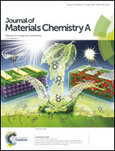
D. P. Dubal, J. Kolleboyina , R. Zboril, R. A. Fischer, P. Gomez-Romero: Unveiling BiVO4 Nanorods as a Novel Anode Material for High Performance Lithium Ion Capacitor: Beyond intercalation strategy, JOURNAL OF MATERIALS CHEMISTRY A, vol. 6, iss. 14, pp. 6096–6106, 2018.
DOI: 10.1039/c8ta00549d, IF = 10.733
Abstract: Energy storage is increasingly demanded in many new niches of applications from wearables to unmanned autonomous vehicles. However, current energy storage systems are unable to fulfill the power requirements (high energy at high power) needed for these novel applications. Recently, Li-ion capacitors (LICs) have been spotted as hybrid device with the potential to display high energy and high power. Nevertheless, it is still a great challenge to achieve high performance LICs due to the unmatched kinetic property and capacity between anode and cathode materials. Herein, we are presenting our first seminal report on the use of BiVO4 nanorods as a new anode material for LICs coupled with a partially reduced graphene oxide (PRGO) cathode. The BiVO4 nanorods show an excellent reversible capacity of 877 mAh/g (ultrahigh volumetric capacity of 4560 mAh/cm3) at 1.1 A/g with a great capacity retention (in half-cell design), which is highest value reported so far for metal vanadates. Later on, a LIC was constructed with BiVO4 as an anode and PRGO as a cathode electrode delivering high energy density of 152 Wh/kg and a maximum power density of 9.6 kW/kg compared to that for hard carbon and intercalation (such as Li4Ti5O12, Li3VO4) based anode materials. Additionally, BiVO4//PRGO LIC exhibits good cyclability of 81 % over 6000 cycles. Thus, this investigation opens up new opportunities to develop different LIC systems.
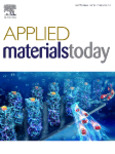
A. Balzerová, A. Opletalová, V. Ranc, R. Zbořil: Multiplex competitive analysis of HER2 and EpCAM cancer markers in whole human blood using Fe2O3@Ag nanocomposite, APPLIED MATERIALS TODAY vol. 13, pp. 166-173, 2018.
DOI: 10.1016/j.apmt.2018.08.016, IF = 8.013
Abstract: Sensitive, reliable, and selective detection of biochemical markers represents a challenging approach toward early diagnosis of cancer diseases. However, the complexity of the targeted physiological environments challenges currently available protocols. Therefore, new, reliable methodologies for the detection of cancer markers are highly demanded. Here, we describe a new method for parallel analysis of two essential cancer markers, HER2 (human epidermal growth factor receptor 2) and EpCAM (epithelial cell adhesion molecule). The method is based on a combination of a Fe2O3@Ag magnetic nanocomposite covalently functionalized with anti-EpCAM and anti-HER2, and surface-enhanced Raman spectroscopy. The detection of target molecules employs a competitive approach between reference compounds, labeled with Raman active tags, and their naturally accruing counterparts. The limit of detection was determined to be 5 ng L−1, where both compounds are statistically distinguishable from a blank sample with p = 0.0093 (HER2) and 0.0016 (EpCAM). The developed methodology presents an exciting alternative to more common methods including immunological methods or PCR.
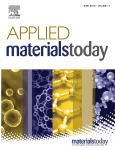
M. Smékalová, A. Panáček, D. Jančula, B. Maršálek, J. Kolařík, R. Prucek, L. Kvítek, R. Zbořil: Culture medium mediated aggregation and re-crystallization of silver nanoparticles reduce their toxicity, APPLIED MATERIALS TODAY vol. 12, pp. 198-206, 2018.
DOI: 10.1016/j.apmt.2018.05.004, IF = 8.013
Abstract: Due to their wide uses in both domestic and industrial applications it is important to consider possible releases of silver nanoparticles (AgNPs) into the environment and the possible consequences. Thus, the potential toxicity of AgNPs to aquatic organisms has been intensively studied recently. However, culture media composition and stability of AgNPs seriously affect dose–response relationship. In present study the chronic toxicity of AgNPs to Daphnia magna in undiluted and 2-fold diluted media was examined. Both gelatin-stabilized and non-stabilized AgNPs were synthesized and their stability was assessed by transmission electron microscopy and UV/Visible spectroscopy. The half maximal effective concentrations (EC50 values) for D. magna reproduction of non-stabilized AgNPs in undiluted medium, non-stabilized AgNPs in 2-fold diluted medium and AgNPs stabilized with 0.0001% (w/v) gelatin in 2-fold diluted medium were found to be 0.96, 0.32 and 0.16 mg/L, respectively. AgNPs stabilized with 0.005% gelatin did not aggregate and marked toxicity was observed across the AgNP concentration range from 0.001 to 1 mg/L. On the contrary, AgNPs with low stability in media were subjected to aggregation and re-crystallization towards large particles, which reduced their toxicity. Thus, the results demonstrate the importance of rigorous characterization of media composition for robust assessment of AgNPs’ toxicological effects.
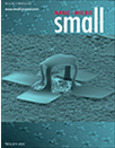
H. Han, S. Kment, F. Karlicky, L. Wang, A. Naldoni, P. Schmuki, and R. Zboril,: Sb-doped SnO2 Nanorods Underlayer Effect to the α-Fe2O3 Nanorods Sheathed with TiO2 for Enhanced Photoelectrochemical Water Splitting, SMALL, vol. 14, iss. 19, p. 1703860, 2018.
DOI: 10.1002/smll.201703860, IF = 10.856
Abstract: Here, a Sb‐doped SnO2 (ATO) nanorod underneath an α‐Fe2O3 nanorod sheathed with TiO2 for photoelectrochemical (PEC) water splitting is reported. The experimental results, corroborated with theoretical analysis, demonstrate that the ATO nanorod underlayer effect on the α‐Fe2O3 nanorod sheathed with TiO2 enhances the PEC water splitting performance. The growth of the well‐defined ATO nanorods is reported as a conductive underlayer to improve α‐Fe2O3 PEC water oxidation performance. The α‐Fe2O3 nanorods grown on the ATO nanorods exhibit improved performance for PEC water oxidation compared to α‐Fe2O3 grown on flat fluorine‐doped tin oxide glass. Furthermore, a simple and facile TiCl4 chemical treatment further introduces TiO2 passivation layer formation on the α‐Fe2O3 to reduce surface recombination. As a result, these unique nanostructures show dramatically improved photocurrent density (139% higher than that of the pure hematite nanorods).
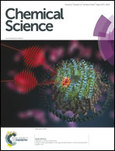
R. Szabla, H. Kruse, P. Stadlbauer, J. Šponer, A. L. Sobolewski: Sequential electron transfer governs the UV-induced self-repair of DNA photolesions, CHEMICAL SCIENCE vol. 9, iss. 12, pp. 3131-3140, 2018.
DOI: 10.1039/c8sc00024g, IF = 9.556
Abstract: Cyclobutane pyrimidine dimers (CpDs) are among the most common DNA lesions occurring due to the interaction with ultraviolet light. While photolyases have been well known as external factors repairing CpDs, the intrinsic self-repairing capabilities of the GAT T DNA sequence were discovered only recently and are still largely obscure. Here, we elucidate the mechanistic details of this self-repair process by means of MD simulations and QM/MM computations involving the algebraic diagrammatic construction to the second order [ADC(2)] method. We show that local UV-excitation of guanine may be followed by up to three subsequent electron transfers, which may eventually enable efficient CpD ring opening when the negative charge resides on the T T dimer. Consequently, the molecular mechanism of GAT T self-repair can be envisaged as sequential electron transfer (SET) occurring downhill along the slope of the S1 potential energy surface. Even though the general features of the SET mechanism are retained in both of the studied stacked conformers, our optimizations of different S1/S0 state crossings revealed minor differences which could influence their self-repair efficiencies. We expect that such assessment of the availability and efficiency of the SET process in other DNA oligomers could hint towards other sequences exhibiting similar photochemical properties. Such explorations will be particularly fascinating in the context of the origins of biomolecules on Earth, owing to the lack of external repairing factors in the Archean age.
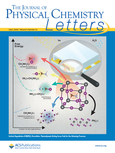
Matochová, M. Medveď, A. Bakandritsos, T. Steklý, R. Zbořil, and M. Otyepka, "2D Chemistry - Chemical Control of Graphene Derivatization," THE JOURNAL OF PHYSICAL CHEMISTRY LETTERS, vol. 9, iss. 13, pp. 3580–3585, 2018.
DOI: 10.1021/acs.jpclett.8b01596, IF = 7.329
Abstract: Controllable synthesis of graphene derivatives with defined composition and properties represents a holy grail of graphene chemistry, especially in view of the low reactivity of graphene. Recent progress in fluorographene (FG) chemistry has opened up new routes for synthesizing a plethora of graphene derivatives with widely applicable properties, but they are often difficult to control. In this work, we explored nucleophilic substitution on FG combining DFT calculations with experiments to achieve accurate control over the functionalization process. In-depth analysis revealed the complexity of the reaction and identified basic rules for controlling the 2D chemistry. Their application, i.e., choice of solvent and reaction time, enabled facile control over the reaction of FG with N-octylamine to form graphene derivatives with tailored content of the alkylamine functional group (2.5-7.5% N atomic content) and F atoms (31.5-3.5% F atomic content). This work substantially extends prospects for the controlled covalent functionalization of graphen

D. Nandan, G. Zoppellaro, I. Medřík, C. Aparicio, P. Kumar, M. Petr, O. Tomanec, M. B. Gawande, R. S. Varma, R. Zbořil: Cobalt-entrenched N-, O-, and S-tridoped carbons as efficient multifunctional sustainable catalysts for base-free selective oxidative esterification of alcohols, GREEN CHEMISTRY vol. 20, iss. 15, pp. 3542-3556, 2018.
DOI: 10.1039/c8gc01333k, IF = 9.405
Abstract: We report the synthesis of sustainable and reusable non-noble transition-metal (cobalt) nanocatalysts containing N-, O-, and S-tridoped carbon nanotubes (Co@NOSC) composites. The inexpensive and benign carrageenan served as carbon, oxygen, and sulfur source, while urea supplied the nitrogen component. The material was prepared via direct mixing of precursors, freeze-drying followed by its carbonization under nitrogen at 900 °C. The Co@NOSC catalysts comprising Co inner core and outer electron-rich heteroatom-doped carbon shell were thoroughly characterized with various techniques namely TEM, HRTEM, STEM elemental mapping, XPS, BET, ICP-MS, etc. The utility of the Co@NOSC catalyst was explored for base-free selective oxidative esterification of alcohols to the corresponding esters under mild reaction conditions; excellent conversions (up to 97%) and selectivities (up to 99%) were discerned. Further substrates scope explored for the cross-esterification of benzyl alcohol with long chain alcohols (up to 98%) and lactonization of diols (up to 68%). The heterogeneous nature and stability of the catalyst facilitated by its ease of separation for long-term performance and recycling studies showed that catalyst was robust and remained active even after six recycling experiments. EPR measurement was performed, to deduce the reaction mechanism in the presence of POBN (α-(4-pyridyl-1-oxide)-N-tert-butylnitrone) as a spin trap agent, which confirmed the formation of •CH2OH radicals and H• radicals, wherein solvent plays an active role in a nonconventional manner; plausible mechanism is proposed for oxidative esterification of alcohols on the basis of EPR findings. The presence of elemental cobalt core along with cobalt oxide and electron-rich N-, O-, S-doped carbon shell displays synergistic effect to afford good to excellent yields of products.

V.Urbanová, K. Jayaramulu, A. Schneemann, Š.Kment, R.A. Fischer, R.Zbořil: Hierarchical Porous Fluorinated Graphene Oxide@Metal–Organic Gel Composite: Label-Free Electrochemical Aptasensor for Selective Detection of Thrombin, ACS APPLIED MATERIALS & INTERFACES, vol. 10, iss. 48, pp. 41089–41097, 2018.
DOI: 10.1021/acsami.8b14344, IF = 8.456
Abstract: Current research effort aims at developing and designing new sensing platform architectures for effectively assaying biological targets that are significantly important for human healthcare and medical diagnosis. Here, we proposed a novel nanostructured sensor based on the combination of fluorinated graphene oxide and iron-based metal–organic gel (FGO@Fe–MOG). The unique properties including hierarchical porosity along with excellent electron transfer behavior make it an ideal candidate for electrochemical sensing of thrombin with superior detection limits compared to other (electrochemical, fluorescence, and colorimetric) strategies. Specifically, thrombin-binding aptamer was immobilized onto FGO@Fe–MOG through strong electrostatic interaction without any special modification or labeling, and the electrochemical impedance spectroscopy was used as the analyzing tool. The introduced aptasensor revealed high selectivity and reproducibility toward thrombin with the detection limit of 58 pM. The effectiveness, reliability, and real applicability of the proposed FGO@Fe–MOG nanohybrid were also confirmed by the determination of thrombin in a complex biological matrix represented by human serum. Taking into account the superior detection limit, high selectivity, reproducibility, and precision, the developed scalable and label-free aptasensor meets the essential requirements for clinical diagnosis of thrombin.
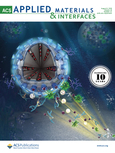
S. Kalytchuk, Y. Wang, K. Polakova, R. Zbořil: Carbon Dot Fluorescence Lifetime-Encoded Anti-Counterfeiting, ACS APPLIED MATERIALS & INTERFACES, vol. 10, iss. 35, pp. 29902–29908, 2018.
DOI: 10.1021/acsami.8b11663, IF = 8.456
Abstract: Carbon dots (CDs) rank among the most promising luminescent nanomaterials for anti-counterfeiting application owing to their high fluorescence quantum yield and nontoxicity. Herein we report a novel, high-level security performance anti-counterfeiting strategy achieved by fluorescence lifetime-encoded carbon dot fluorescent inks. CD inks have identical steady-state emission properties, but they have distinctive and well-separated fluorescence lifetimes allowing authentication of security tags using exclusively fluorescence lifetime imaging (FLI). A proof-of-concept anti-counterfeiting tag using CD-based lifetime-encoded inks is demonstrated. The developed CDs lifetime-based anti-counterfeit technology is awaited to be applicable to a wide spectrum of security-protecting purposes. Furthermore, the presented method can be easily extended to integrate fluorescence lifetime-encoded CDs in multichannel bioimaging, high-throughput flow cytometry, and optical data storage.
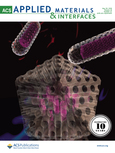
H. Bian, N. T. Nguyen, J. Yoo, S. Hejazi, S. Mohajernia, J. Müller, E. Spiecker, H. Tsuchiya, O. Tomanec, B. E. Sanabria-Arenas, R. Zboril, Y. Y. Li, P. Schmuki: Forming a Highly Active, Homogeneously Alloyed AuPt Co-catalyst Decoration on TiO2 Nanotubes Directly During Anodic Growth, ACS APPLIED MATERIALS & INTERFACES vol. 10, iss. 21, pp. 18220-18226, 2018.
DOI: 10.1021/acsami.8b03713, IF = 8.456
Abstract: Au and Pt do not form homogeneous bulk alloys as they are thermodynamically not miscible. However, we show that anodic TiO2 nanotubes (NTs) can in situ be uniformly decorated with homogeneous AuPt alloy nanoparticles (NPs) during their anodic growth. For this, a metallic Ti substrate containing low amounts of dissolved Au (0.1 atom %) and Pt (0.1 atom %) is used for anodizing. The matrix metal (Ti) is converted to oxide, whereas at the oxide/metal interface direct noble metal particle formation and alloying of Au and Pt takes place; continuously these particles are then picked up by the growing nanotube wall. In our experiments, the AuPt alloy NPs have an average size of 4.2 nm, and at the end of the anodic process, these are regularly dispersed over the TiO2 nanotubes. These alloyed AuPt particles act as excellent co-catalyst in photocatalytic H2 generation, with a H2 production rate of 12.04 μL h–1 under solar light. This represents a strongly enhanced activity as compared to TiO2 NTs decorated with monometallic particles of Au (7 μL h–1) or Pt (9.96 μL h–1).
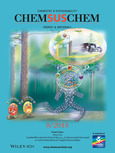
H. Ahn, A. Goswami, F. Riboni, S. Kment, A. Naldoni, S. Mohajernia, R. Zboril, P. Schmuki: Hematite Photoanode with Complex Nanoarchitecture Providing Tunable Gradient Doping and Low Onset Potential for Photoelectrochemical Water Splitting, CHEMSUSCHEM, ol. 11, iss. 11, pp. 1873–1879, 2018.
DOI: 10.1002/cssc.201800256, IF = 7.804
Abstract: Over the past years, α‐Fe2O3 (hematite) has re‐emerged as a promising photoanode material in photoelectrochemical (PEC) water splitting. In spite of considerable success in obtaining relatively high solar conversion efficiency, the main drawbacks hindering practical application of hematite are its intrinsically hampered charge transport and sluggish oxygen evolution reaction (OER) kinetics on the photoelectrode surface. In the present work, we report a strategy that synergistically addresses both of these critical limitations. Our approach is based on three key features that are applied simultaneously: i) a careful nanostructuring of the hematite photoanode in the form of nanorods, ii) doping of hematite by Sn4+ ions using a controlled gradient, and iii) surface decoration of hematite by a new class of layered double hydroxide (LDH) OER co‐catalysts based on Zn–Co LDH. All three interconnected forms of functionalization result in an extraordinary cathodic shift of the photocurrent onset potential by more than 300 mV and a PEC performance that reaches a photocurrent density of 2.00 mA cm−2 at 1.50 V vs. the reversible hydrogen electrode.
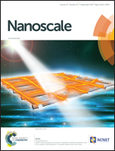
J. Hellerstedt, A. Cahlík, M. Švec, B. de la Torre, M. Moro-Lagares, T. Chutora, B. Papoušková, G. Zoppellaro, P. Mutombo, M. Ruben, R. Zbořil, P. Jelinek: On-surface structural and electronic properties of spontaneously formed Tb2Pc3 single molecule magnets, NANOSCALE, vol. 10, iss. 33, pp. 15553-15563, 2018.
DOI: 10.1039/c8nr04215b, IF = 6.97
Abstract: The single molecule magnet (SMM) bis(phthalocyaninato)terbium(III) (TbPc2) has received significant and increasing attention as an exemplar system for realizing molecule-based spin electronics. Attaining higher nuclearity via multi-decker TbPc systems has remained an outstanding challenge, as known examples of Tb2Pc3 systems are only those containing Pc rings with substituents (e.g. alkyl, alkoxyl). Here we report on the spontaneous formation of Tb2Pc3 species from TbPc2 precursors via sublimation in ultrahigh vacuum (UHV) onto an Ag(111) surface. The presence of Tb2Pc3 molecules on the surface are inspected using scanning probe microscopy with submolecular resolution supported by density functional theory (DFT) calculations and additional chemical analysis. We observe the selective presence of a Kondo resonance (30 K) in the Tb2Pc3 species, that we attribute to differences in the orientation of the internal molecular ligands. Formation of triple-decker complexes offers new possibilities to study and control magnetic interactions not accessible with standard TbPc2 molecules.
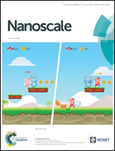
A. Koutsioukis, A. Akouros, R. Zboril, V. Georgakilas: Solid phase extraction for the purification of violet, blue, green and yellow emitting carbon dots, NANOSCALE, vol. 10, iss. 24, pp. 11293–11296, 2018.
DOI: 10.1039/c8nr03668c, IF = 6.97
Abstract: In this work, we describe a simple and general procedure for the purification of Carbon dots. Following a hydrothermal heating procedure, the reaction mixture, apart from Carbon dots, usually contains unreacted starting material and by-products, which often appear among else intense photoluminescence. The proposed purification method is based on a solid phase extraction technique, where the reaction mixture is absorbed on porous alumina and Carbon Dots are isolated from by-products and unreacted organics using proper solvents and finally recovered from alumina using a simple extraction.
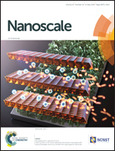
P. Lazar, E. Otyepková, M. Pykal, K. Čépe, M. Otyepka: Role of the puckered anisotropic surface in the surface and adsorption properties of black phosphorus, NANOSCALE vol. 10, iss. 19, pp. 8979-8988, 2018.
DOI: 10.1039/c8nr00329g, IF = 6.97
Abstract: Nanomaterials have a high surface-to-mass ratio and their surface properties significantly affect their features and application potential. Phosphorene, a single layer of black phosphorus (BP), was the first homoatomic two-dimensional material to be prepared after the discovery of graphene. The structure of phosphorene resembles the honeycomb arrangement of graphene, but its layers are buckled and highly anisotropic. We studied how this difference affects the surface properties of BP, namely the free surface energy and adsorption affinity of various organic molecules. Using inverse gas chromatography, we measured the total surface free energy of BP powder to be 90 mJ m−2 and showed that it was dominantly determined by dispersion forces, but, unlike on graphene, with a notable contribution from specific acid–base interactions. We further measured adsorption enthalpies of volatile organic compounds on BP and rationalized them using density functional theory calculations. Polar molecules showed an increased affinity due to a significant contribution of dipole–dipole interactions to the molecule–surface bonding, because the buckled surface of BP causes higher diffusion barriers than those on graphene, hinders molecular in-plane motion and supports mutual orientation of molecular dipoles over longer distances, in contrast to graphene.
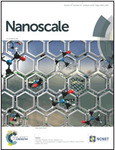
M. Medveď, G. Zoppellaro, J. Ugolotti, D. Matochová, P. Lazar, T. Pospíšil, A. Bakandritsos, J. Tuček, R. Zbořil, M. Otyepka: Reactivity of fluorographene is triggered by point defects: beyond the perfect 2D world, NANOSCALE vol. 10, iss. 10, pp. 4696-4707, 2018.
DOI: 10.1039/c7nr09426d, IF = 6.97
Abstract: Preparation of graphene derivatives using fluorographene (FG) as a precursor has become a key strategy for the large-scale synthesis of new 2-D materials (e.g. graphene acid, cyanographene, allyl-graphene) with tailored physicochemical properties. However, to gain full control over the derivatization process, it is essential to understand the reaction mechanisms and accompanying processes that affect the composition and structure of the final products. Despite the strength of C–F bonds and high chemical stability of perfluorinated hydrocarbons, FG is surprisingly susceptible to reactions under ambient conditions. There is clear evidence that nucleophilic substitution on FG is accompanied by spontaneous defluorination, and solvent-induced defluorination can occur even in the absence of any nucleophilic agent. Here, we show that distributed radical centers (fluorine vacancies) on the FG surface need to be taken into account in order to rationalize the defluorination mechanism. Depending on the environment, these radical centers can react as electron acceptors, electrophilic sites and/or cause homolytic bond cleavages. We also propose a new radical mechanism of FG defluorination in the presence of N,N′-dimethylformamide (DMF) solvent. Spin-trap experiments as well as 19F NMR measurements unambiguously confirmed formation of N,N′-dimethylformyl radicals and also showed that N,N′-dimethylcarbamoyl fluoride plays a key role in the proposed mechanism. These findings imply that point defects in 2D materials should be considered as key factor determining their chemical properties and reactivity.

J. Kolařík, R. Prucek, J. Tuček, J. Filip, V. K. Sharma, R. Zbořil: Impact of inorganic ions and natural organic matter on arsenates removal by ferrate(VI): Understanding a complex effect of phosphates ions, WATER RESEARCH vol. 141, pp. 357-365, 2018.
DOI: 10.1016/j.watres.2018.05.024, IF = 7.913
Abstract: Arsenic compounds are carcinogenic to humans and are typically removed from contaminated water using various sorbents. The ionic composition plays a significant role in arsenate removal efficiency during the process of water remediation. Here, we quantify the effects of natural ions (chlorides, nitrates, carbonates, sulfates, and phosphates) and humic acid on the removal of arsenates by ferrate(VI) at pH = 6.6. In the experiments, the initial concentration of arsenates was 10 mg L−1 (as As) and the concentrations of ions varied in the range from 5 to 100 mg L−1 of element in ionic form and humic acid. The achieved results show that only phosphate ions had principle influence on the efficiency of arsenate removal by ferrate(VI). The effect of phosphates was elucidated by applying transmission electron microscopy, energy-dispersive X-ray spectroscopy, and low temperature in-field 57Fe Mössbauer spectroscopy to solid samples, prepared under different weight ratios of ferrate(VI), arsenates, and phosphates. These results show three crucial effects of phosphates on the arsenate removal mechanisms. At low P:As weight ratio (up to 1:1), the incorporation of arsenate ions into the crystalline structure of γ-Fe2O3/γ-FeOOH nanoparticles was found to be suppressed by the presence of phosphates. Thus, arsenates were mainly adsorbed onto the surface of γ-Fe2O3/γ-FeOOH nanoparticles. Further increase in the P:As weight ratio (more than 1:1) resulted in the competition between arsenates and phosphates sorption. With the increased concentration of phosphate ions, the number of arsenates on the surface of γ-Fe2O3/γ-FeOOH nanoparticles was reduced. Finally, the complexation of iron(III) ions with phosphate ions occurred, leading to a decrease in the arsenates removal efficiency, which resulted from a lower content of precipitated γ-Fe2O3/γ-FeOOH nanoparticles. All these aspects need to be considered prior to application of ferrate(VI) for arsenates removal in real natural waters.
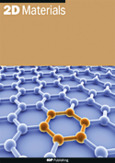
Q. Li, J. P. Froning, M. Pykal, S. Zhang, Z. Wang, M. Vondrák, P. Banáš, K. Čépe, P. Jurečka, J. Šponer, R. Zbořil, M. Dong, M. Otyepka: RNA nanopatterning on graphene, 2D MATERIALS vol. 5, iss. 3, pp. 031006, 2018.
DOI: 10.1088/2053-1583/aabdf7, IF = 7.343
Abstract: Graphene-based materials enable the sensing of diverse biomolecules using experimental approaches based on electrochemistry, spectroscopy, or other methods. Although basic sensing was achieved, it had until now not been possible to understand and control biomolecules' structural and morphological organization on graphene surfaces (i.e. their stacking, folding/unfolding, self-assembly, and nano-patterning). Here we present the insight into structural and morphological organization of biomolecules on graphene in water, using an RNA hairpin as a model system. We show that the key parameters governing the RNA's behavior on the graphene surface are the number of graphene layers, RNA concentration, and temperature. At high concentrations, the RNA forms a film on the graphene surface with entrapped nanobubbles. The density and the size of the bubbles depend on the number of graphene layers. At lower concentrations, unfolded RNA stacks on the graphene and forms molecular clusters on the surface. Such a control over the conformational behavior of interacting biomolecules at graphene/water interfaces would facilitate new applications of graphene derivatives in biotechnology and biomedicine.

J. Kašlík, J. Kolařík, J. Filip, I. Medřík, O. Tomanec, M. Petr, O. Malina, R. Zbořil, P. G. Tratnyek: Nanoarchitecture of advanced core-shell zero-valent iron particles with controlled reactivity for contaminant removal, CHEMICAL ENGINEERING JOURNAL vol. 354, pp. 335-345, 2018.
DOI: 10.1016/j.cej.2018.08.015, IF = 8.355
Abstract: The optimization of nanoscale zero-valent iron (nZVI) for groundwater remediation applications requires consideration of properties that influence its longevity and transport in porous media and reactivity with contaminants. Here, we report on the stabilization of nZVI by controlled growth of oxide shells of varying thickness and characterization of the resulting materials’ structure and reactivity. Using a thermal oxidation method, nZVI was prepared with shell thickness varying between 4 and 10 nm. These nZVI materials, together with pyrophoric nZVI (without a passivating oxide coating) and two commercial nZVI materials (NANOFER STAR and NANOFER 25), were characterized in detail with respect to morphology, shell thickness, structure, magnetism, stability, and reactivity. The results show that increasing oxidation temperature results in thicker oxide coatings on the particles, but these coatings also have more fractures and other defects. The reactivity of these particles, demonstrated on Cr(VI) and Cu(II) removal, increases with increasing shell thickness, probably as a result of higher extent of defects in thicker shell. Therefore the ability to control thickness and character of the shell leads to possibility to controlling reactivity while keeping comparable content of Fe(0) in the material. These nZVI materials with 7 and 10 nm oxide shell prepared via simple solid-gas synthesis can be used as a suitable alternative to common air-stable nZVI without additional activation steps.
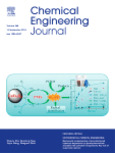
M. Czölderová, M. Behúl, J. Filip, P. Zajíček, R. Grabic, A. Vojs-Staňová, M. Gál, K. Kerekeš, J. Híveš, J. Ryba, M. Rybanská, P. Brandeburová, T. Mackuľak: 3D printed polyvinyl alcohol ferrate(VI) capsules: Effective means for the removal of pharmaceuticals and illicit drugs from wastewater, CHEMICAL ENGINEERING JOURNAL vol. 349, pp. 269-275, 2018.
DOI: 10.1016/j.cej.2018.05.089, IF = 8.355
Abstract: Wastewaters are considered as a significant source of pathogenic microorganisms and wide spectrum of various compounds. In this study the capsulation of ferrate using 3D printing and its application for the degradation of selected pharmaceuticals, illicit drugs and its metabolites in real wastewater from the effluent of urban wastewater treatment plant (WWTP) Petržalka and Psychiatric clinic was investigated.
In the first part of the study, the stability of capsules made from various polymeric materials was tested. The best results were found in the case of the laboratory 3D-printed polyvinyl alcohol (PVA) capsules where high long-term stability of ferrate was observed. In this type of capsules ferrate can be stored at ambient conditions more than one month without significant decrease of its degradation efficiency.
In the next part of the study the ability of ferrate capsulated in 3D printed PVA capsules to oxidize various micropollutants present in real wastewater was tested. The best efficiency was achieved for clarithromycin, azithromycin, valsartan, diclofenac, atenolol and carbamazepine (over 80%). However, some of the tested compounds, such as caffeine, tramadol, and venlafaxine were only partially oxidized. It was also found that an increase of the amount of capsulated ferrate did not always lead to a significant increase of degradation efficiency. Capsulation of ferrate used in our research gives, therefore, the possibility not only to store but also to instantly apply ferrate in emergency situations and even in those environments where pure ferrate is rapidly decomposed.
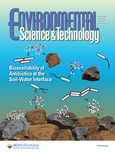
Y. Su, D. Jassby, S. Song, X. Zhou, H. Zhao, J. Filip, E. Petala, Y. Zhang: Enhanced Oxidative and Adsorptive Removal of Diclofenac in Heterogeneous Fenton-like Reaction with Sulfide Modified Nanoscale Zerovalent Iron, ENVIRONMENTAL SCIENCE & TECHNOLOGY vol. 52, iss. 11, pp. 6466-6475, 2018.
DOI: 10.1021/acs.est.8b00231, IF = 7.149
Abstract: Sulfidation of nanoscale zerovalent iron (nZVI) has shown some fundamental improvements on reactivity and selectivity toward pollutants in dissolved-oxygen (DO)-stimulated Fenton-like reaction systems (DO/S-nZVI system). However, the pristine microstructure of sulfide-modified nanoscale zerovalent iron (S-nZVI) remains uncovered. In addition, the relationship between pollutant removal and the oxidation of the S-nZVI is largely unknown. The present study confirms that sulfidation not only imparts sulfide and sulfate groups onto the surface of the nanoparticle (both on the oxide shell and on flake-like structures) but also introduces sulfur into the Fe(0) core region. Sulfidation greatly inhibits the four-electron transfer pathway between Fe(0) and oxygen but facilitates the electron transfer from Fe(0) to surface-bound Fe(III) and consecutive single-electron transfer for the generation of H2O2 and hydroxyl radical. In the DO/S-nZVI system, slight sulfidation (S/Fe molar ratio = 0.1) is able to nearly double the oxidative removal efficacy of diclofenac (DCF) (from 17.8 to 34.2%), whereas moderate degree of sulfidation (S/Fe molar ratio = 0.3) significantly enhances both oxidation and adsorption of DCF. Furthermore, on the basis of the oxidation model of S-nZVI, the DCF removal process can be divided into two steps, which are well modeled by parabolic and logarithmic law separately. This study bridges the knowledge gap between pollutant removal and the oxidation process of chemically modified iron-based nanomaterials.

B. Dousova, M. Lhotka, J. Filip, D. Kolousek: Removal of arsenate and antimonate by acid-treated Fe-rich clays, JOURNAL OF HAZARDOUS MATERIALS vol. 357, pp. 440-448, 2018.
DOI: 10.1016/j.jhazmat.2018.06.028, IF = 7.65
Abstract: Iron impurities in clays degrade the quality in many aspects, but available Fe oxides can significantly improve adsorption affinity of clays to anionic particles. Two natural Fe-rich clays (kaolin and bentonite) were treated in 0.5 M HCl (pH = 1.1) and 0.15 M (COOH)2 (pH = 1.2), and then used to adsorb AsV/SbV oxyanions from model solutions. After acid leaching, the equilibrium sorption capacities (qmax) increased from 2.3 × 10-3 to 39.2 × 10-3 mmol g-1 for AsV and from 2.4 × 10-3 to 40.1 × 10-3 mmol g-1 for SbV, more than doubling the adsorption yields (≈95%) of both oxyanions. Leaching in 0.5 M HCl enhanced both AsV and SbV adsorption, whereas leaching in 0.15 M (COOH)2 mainly improved the adsorption of SbV. Bentonite, which contained fewer crystalline forms of Fe, exhibited better sorption properties for both oxyanions. The leaching of Fe followed first-order kinetics, whereas the adsorption of AsV/SbV followed second-order kinetics. Acid leaching of Fe-rich clays can be used for the preparation of highly selective anionactive sorbents.
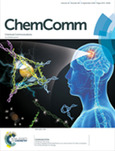
P. Štarha, Z. Trávníček, Z. Dvořák: A cytotoxic tantalum(v) half-sandwich complex: a new challenge for metal-based anticancer agents, CHEMICAL COMMUNICATIONS vol. 54, iss. 68, pp. 9533-9536, 2018.
DOI: 10.1039/c8cc05223a, IF = 6.164
Abstract: Despite the biological relevance of complexes of various transition metals, tantalum complexes have long been neglected by bioinorganic chemists. Herein, we demonstrate potential chemotherapeutic applicability of the [Ta(η5-Cp*)Cl2(salaph)] (1) complex, containing deprotonated Schiff base 2-{(E)-[(2-hydroxyphenyl)imino]methyl}phenol (H2salaph), which shows strong cytotoxicity in cancer cells, related to the induction of apoptosis and apoptosis-related processes, but shows low cytotoxicity in healthy cells.
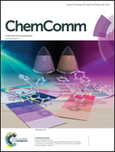
G. Cassone, J. Sponer, J. E. Sponer, F. Pietrucci, A. M. Saitta, F. Saija: Synthesis of (d)-erythrose from glycolaldehyde aqueous solutions under electric field, CHEMICAL COMMUNICATIONS vol. 54, iss. 26, pp. 3211-3214, 2018.
DOI: 10.1039/c8cc00045j, IF = 6.164
Abstract: The formation of the first C–C bonds from formaldehyde represents the rate-limiting step of the formose reaction. However, the free-energy surface associated with such a process has never been determined in condensed phase. By means of ab initio molecular dynamics and metadynamics techniques here we report on the free-energy landscape underlying the synthesis of glycolaldehyde from a formaldehyde aqueous solution. Moreover, numerical samples of formaldehyde (both neat and in water solution) and of glycolaldehyde (both neat and in aqueous solution) have been exposed to intense electric fields. The application of electrostatic gradients strongly prevents the formaldehyde umpolung and catalyzes the formation of C–O-bonded polymers in formaldehyde-containing samples. However, when the field is applied on glycolaldehyde aqueous solutions, new C–C bonds are formed and (D)-erythrose is synthesized. This way, a numerical Miller-like experiment led
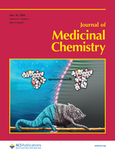
T. Gucký, E. Řezníčková, T. Radošová Muchová, R. Jorda, Z. Klejová, V. Malínková, K. Berka, V. Bazgier, H. Ajani, M. Lepšík, V. Divoký, V. Kryštof: Discovery of N2-(4-Amino-cyclohexyl)-9-cyclopentyl-N6-(4-morpholin-4-ylmethyl-phenyl)-9H-purine-2,6-diamine as a Potent FLT3 Kinase Inhibitor for Acute Myeloid Leukemia with FLT3 Mutations, JOURNAL OF MEDICINAL CHEMISTRY vol. 61, iss. 9, pp. 3855-3869, 2018.
DOI: 10.1021/acs.jmedchem.7b01529, IF = 6.054
Abstract: FLT3 tyrosine kinase is a potential drug target in acute myeloid leukemia (AML) because patients with FLT3-ITD mutations respond poorly to standard cytotoxic agents and there is a clear link between the disease and the oncogenic properties of FLT3. We present novel 2,6,9-trisubstituted purine derivatives with potent FLT3 inhibitory activity. The lead compound 7d displays nanomolar activity in biochemical assays and selectively blocks proliferation of AML cell lines harboring FLT3-ITD mutations, whereas other transformed and normal human cells are several orders of magnitude less sensitive. The MV4-11 cells treated with 7d suppressed the phosphorylation of FLT3 and its downstream signaling pathways, with subsequent G1 cell cycle arrest and apoptosis. Additionally, a single dose of 7d in mice with subcutaneous MV4-11 xenografts caused sustained inhibition of FLT3 and STAT5 phosphorylation over 48 h, in contrast to the shorter effect observed after administration of the reference FLT3 inhibitor quizartinib.
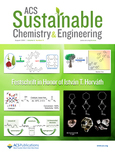
R. Kadam, M. Petr, R. Zbořil, R. V. Jayaram, M. B. Gawande: Hexagonal mesoporous silica supported ultra-small copper oxides for oxidative amidation of carboxylic acids, ACS SUSTAINABLE CHEMISTRY & ENGINEERING, vol. 6, iss. 10, pp. 12935–12945, 2018.
DOI: 10.1021/acssuschemeng.8b02247, IF = 6.97
Abstract: Hexagonal mesoporous silica (HMS) supported copper oxide nanoparticles were prepared by a one-pot sol-gel synthesis and their physicochemical properties were determined by XRD, ICP-MS, SEM, TEM, and N2 physisorption, HR-TEM and elemental mapping. A series of CuO/HMS catalysts was prepared with different Cu loadings (1, 1.5,2, 2.5, 3, and 5 wt%). The catalytic performance of the prepared catalysts was investigated for the oxidative amidation of carboxylic acids. Notably, under mild reaction conditions the CuO/HMS catalysts exhibited excellent activity in terms of conversions (70–95%), and selectivity (80-86%). The improved catalytic performance of CuO/HMS catalysts may be attributed to the homogeneous dispersion and uniformity of the active copper species on the HMS support with large surface area. Having investigated the functional group tolerance, the developed protocol can also be extended for the synthesis of insect repellent molecules such as N,N-diethyl phenylacetamide (DEPA), N,N-diethylbenzamide (DEB), and N,N-diethyl m-toluamide (DEET) in good to excellent conversions with better TON and E factor. The reaction protocol is sustainable due to its mild reaction conditions, high conversions and selectivities superior to reported protocols. Importantly, the catalysts can be separated by simple centrifugation and can be recycled for several reaction cycles.
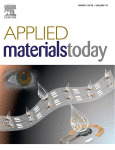
Z. Chaloupková, A. Balzerová, Z. Medříková, J. Srovnal, M. Hajdúch, K. Čépe, V. Ranc, R. Zbořil: Label-free determination and multiplex analysis of DNA and RNA in tumor tissues, APPLIED MATERIALS TODAY vol. 12, pp. 85-91, 2018.
DOI: 10.1016/j.apmt.2017.12.012, IF = 8.013
Abstract: Determination of the total content of nucleic acids constitutes an important part of medicinal diagnosis. This determination is typically performed using a combination of spectrophotometry and polymerase chain reaction, where multi-step and complex sample pretreatment is generally required. To simplify the analysis, we present a nanosensor for the multiplex determination of DNA and RNA. This nanosensor consists of a magnetic Fe3O4@Ag nanocomposite functionalized by a low molecular selector from the family of alkylating agents, chlorambucil. The sensor allows selective isolation of nucleic acids based on the magnetic properties of integrated Fe3O4 nanoparticles and consecutive determination of their content via magnetically assisted surface-enhanced Raman spectroscopy (MA-SERS). Limits of detection of 3.0 ng L−1 and 3.8 ng L−1 are achieved for DNA and RNA, respectively. The enhanced selectivity of the developed sensor, owing to the presence of the alkylating agent, allows multiplexed analysis of DNA and RNA with low relative errors (<10%) of determination.
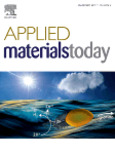
A. V.C., A. Goswami, H. Sopha, D. Nandan, M. B. Gawande, K. Cepe, S. Ng, R. Zboril, J. M. Macak: Pt nanoparticles decorated TiO 2 nanotubes for the reduction of olefins, APPLIED MATERIALS TODAY vol. 10, pp. 86-92, 2018.
DOI: 10.1016/j.apmt.2017.12.006, IF = 8.013
Abstract: High surface area TiO2 nanotubes (TNTs) were used as a catalyst support for well dispersed, stable and ultra-small (3–5 nm) Pt nanoparticles (Pt@TNTs) for the reduction of olefins. Pt@TNT catalyst was synthesized by a simple soaking of anodized TNTs in the chloroplatinic (H2PtCl6) acid solution. Various techniques such as XRD, SEM, TEM, and XPS were used to characterize the materials and its catalytic property for the olefin reduction has been described along with a proposed mechanism. The Pt@TNT catalyst showed moderate to high catalytic conversions of styrene and its derivative to ethyl benzene-based products using hydrazine hydrate as a reducing agent. An excellent catalytic activity along with high product selectivity was achieved using low amount (10 mg) of Pt@TNT catalyst containing ∼2.2 wt.% Pt and short reaction time (45 min).

B. Hudcová, V. Veselská, J. Filip, S. Číhalová, M. Komárek: Highly effective Zn(II) and Pb(II) removal from aqueous solutions using Mg-Fe layered double hydroxides: Comprehensive adsorption modeling coupled with solid state analyses, JOURNAL OF CLEANER PRODUCTION vol. 171, pp. 944-953, 2018.
DOI: 10.1016/j.jclepro.2017.10.104, IF = 6.395
Abstract: Comprehensive mechanistic and modeling approaches are needed to effectively evaluate sorption of metal ions from aqueous solutions. However, such a complex study using layered double hydroxides has not yet been presented. Therefore, adsorption modeling was performed coupled with solid state analyses describing the mode of zinc and lead removal by magnesium-iron layered double hydroxides, and an excellent removal efficiency for both metal ions was observed. The maximal adsorbed concentration, as established by the Langmuir model, increased with the increasing magnesium/iron molar ratio. The pH-dependent sorption was fitted by the diffuse layer model, which described the formation of monodentate inner-sphere complexes, indicating strong binding between metal ions and the layered double hydroxides surface. Based on the solid state analyses of materials with high surface concentrations of zinc (1.44 mmol g−1) and lead (1.65 mmol g−1), respectively, the whole sorption mechanism was also influenced by other processes, i.e., precipitation (lead) and surface accumulation/precipitation/isomorphic substitution (zinc). Transmission electron microscopy-based elemental mapping showed a heterogeneous distribution of zinc and lead on the surface of particles. Low-temperature Mössbauer spectra were nearly identical for the studied materials before/after zinc and lead sorption indicating no structural changes in incorporated iron. Generally, we suggest that these layered double hydroxides are highly effective sorbents for metal ions from aqueous solutions. Furthermore, we propose a comprehensive mechanistic/modeling approach as a powerful tool for describing the mechanism of metal ions binding on layered double hydroxides in contaminated waters.
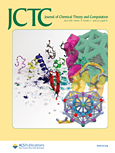
M. Paloncýová, M. Langer, M. Otyepka: Structural Dynamics of Carbon Dots in Water and N,N-Dimethylformamide Probed by All-Atom Molecular Dynamics Simulations, JOURNAL OF CHEMICAL THEORY AND COMPUTATION vol. 14, iss. 4, pp. 2076-2083, 2018.
DOI: 10.1021/acs.jctc.7b01149, IF = 5.313
Abstract: Carbon dots (CDs), one of the youngest members of the carbon nanostructure family, are now widely experimentally studied for their tunable fluorescence properties, bleaching resistance, and biocompatibility. Their interaction with biomolecular systems has also been explored experimentally. However, many atomistic details still remain unresolved. Molecular dynamics (MD) simulations enabling atomistic and femtosecond resolutions simultaneously are a well-established tool of computational chemistry which can provide useful insights into investigated systems. Here we present a full procedure for performing MD simulations of CDs. We developed a builder for generating CDs of a desired size and with various oxygen-containing surface functional groups. Further, we analyzed the behavior of various CDs differing in size, surface functional groups, and degrees of functionalization by MD simulations. These simulations showed that surface functionalized CDs are stable in a water environment through the formation of an extensive hydrogen bonding network. We also analyzed the internal dynamics of individual layers of CDs and evaluated the role of surface functional groups on CD stability. We observed that carboxyl groups interconnected the neighboring layers and decreased the rate of internal rotations. Further, we monitored changes in the CD shape caused by an excess of charged carboxyl groups or carbonyl groups. In addition to simulations in water, we analyzed the behavior of CDs in the organic solvent DMF, which decreased the stability of pure CDs but increased the level of interlayer hydrogen bonding. We believe that the developed protocol, builder, and parameters will facilitate future studies addressing various aspects of structural features of CDs and nanocomposites containing CDs.
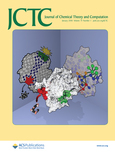
M. Zgarbová, P. Jurečka, J. Šponer, M. Otyepka: A- to B-DNA Transition in AMBER Force Fields and Its Coupling to Sugar Pucker, JOURNAL OF CHEMICAL THEORY AND COMPUTATION vol. 14, iss. 1, pp. 319-328, 2018.
DOI: 10.1021/acs.jctc.7b00926, IF = 5.313
Abstract: The A/B transition is a basic element of DNA conformational change. Because of its involvement in the sensing of the ionic conditions by DNA and in specific protein–DNA interactions, this transition is important for biological functions of DNA. Therefore, accurate modeling of the A/B equilibrium by means of empirical force fields is of utmost interest. In this work, we examine the A/B equilibrium in three AMBER force fields, including the recent bsc1 and OL15 modifications, using much longer MD simulations than attempted before. Special attention is paid to the coupling of the A/B equilibrium with the south/north (S/N) transition of the sugar pucker. We found that none of the tested force fields provided a satisfactory description of the A/B equilibrium because the B-form was predicted to be much too stable and the A-form was predicted to be almost absent even in concentrated trifluoroethanol solutions. Based on comparison with NMR data for duplexes and single nucleosides, we hypothesize that this problem arose from the incorrect description of the S/N equilibrium of sugar pucker, where the south conformation is much too stable, thus stabilizing the B-form. Because neither the A/B equilibrium in duplexes nor the S/N equilibrium in nucleosides was described accurately, further refinements of the AMBER DNA force fields are needed.
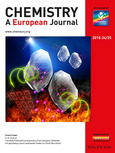
L. Pogány, B. Brachňaková, J. Moncol, J. Pavlik, I. Nemec, Z. Trávníček, M. Mazúr, L. Bučinský, L. Suchánek, I. Šalitroš: Impact of Substituent Variation on the Presence of Thermal Spin Crossover in a Series of Mononuclear Iron(III) Schiff Base Complexes with Terminal Pseudohalido Co-ligands, CHEMISTRY - A EUROPEAN JOURNAL vol. 24, iss. 20, pp. 5191-5203, 2018.
DOI: 10.1002/chem.201704546, IF = 5.16
Abstract: A series of novel iron(III) complexes of the general formula [Fe(L)X] (where L is a dianion of pentadentate Schiff base ligand N,N′‐bis({2‐hydroxy‐3,5‐dimethylphenyl}phenyl)methylidene‐1,6‐diamino‐3‐azapentane=H2L1 for 1 and 2; N,N′‐bis({2‐hydroxy‐3‐ethoxyphenyl}methylidene)‐1,6‐diamino‐3‐azapentane=H2L2 for 3 and 3⋅C3H6O) and X is terminal pseudohalido ligand (X=N3 for 1, X=NCS for 2, and X=NCSe for 3 and 3⋅C3H6O) were synthesized and thoroughly characterized. Magnetic measurements revealed the above room temperature spin crossover for isomorphic complexes 1 and 2 (T1/2=441 K and T1/2=435 K, respectively), whereas the solvent‐free complex 3 showed a half complete spin crossover (T1/2=250 K), which was detected by variable temperature crystallography as well. On the other hand, solvated complex 3⋅C3H6O exhibited permanent high spin state behaviour and either recrystallization or in situ thermal desolvation converts 3⋅C3H6O to solvent‐free and spin‐crossover‐active form 3. Magnetic properties of all the reported complexes were also supported by EPR spectroscopy experiments and in addition, DFT and ab initio calculations were employed for the evaluation of the g‐factor and zero field splitting parameters.

T. Pluháček, M. Švidrnoch, V. Maier, V. Havlíček, K. Lemr: Laser ablation inductively coupled plasma mass spectrometry imaging: A personal identification based on a gunshot residue analysis on latent fingerprints, ANALYTICA CHIMICA ACTA vol. 1030, pp. 25-32, 2018.
DOI: 10.1016/j.aca.2018.05.074, IF = 5.256
Abstract: The single molecule magnet (SMM) bis(phthalocyaninato)terbium(III) (TbPc2) has received significant and increasing attention as an exemplar system for realizing molecule-based spin electronics. Attaining higher nuclearity via multi-decker TbPc systems has remained an outstanding challenge, as known examples of Tb2Pc3 systems are only those containing Pc rings with substituents (e.g. alkyl, alkoxyl). Here we report on the spontaneous formation of Tb2Pc3 species from TbPc2 precursors via sublimation in ultrahigh vacuum (UHV) onto an Ag(111) surface. The presence of Tb2Pc3 molecules on the surface are inspected using scanning probe microscopy with submolecular resolution supported by density functional theory (DFT) calculations and additional chemical analysis. We observe the selective presence of a Kondo resonance (30 K) in the Tb2Pc3 species, that we attribute to differences in the orientation of the internal molecular ligands. Formation of triple-decker complexes offers new possibilities to study and control magnetic interactions not accessible with standard TbPc2 molecules.
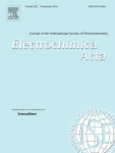
D. Spanu, V. Dal Santo, F. Malara, A.Naldoni, A. Turolla, M. Antonelli, C. Dossi, M. Marelli, M. Altomare, P.Schmuki, S. Recchia: Photoelectrocatalytic oxidation of As(III) over hematite photoanodes: A sensible indicator of the presence of highly reactive surface sites, ELECTROCHIMICA ACTA vol. 292, pp. 828-837, 2018.
DOI: 10.1016/j.electacta.2018.10.003, IF = 5.383
Abstract: Hematite-based photoanodes were used for the photoelectrocatalysed batch oxidation of As(III) in water at pH 7 and 10. Tests were carried out at different As(III) initial concentrations, ranging from 150 μg/L to 30 mg/L. With no pre-treatments, an initial inactive period of 40–50 min was always observed at the beginning of every test. This initial inactive period is completely removed by a surface modification of surface active sites induced by a pre-polarisation at 800 mV (vs. Ag/AgCl).
Hematite-based photoanodes were used for the photoelectrocatalysed batch oxidation of As(III) in water at pH 7 and 10. Tests were carried out at different As(III) initial concentrations, ranging from 150 μg/L to 30 mg/L. With no pre-treatments, an initial inactive period of 40–50 min was always observed at the beginning of every test. This initial inactive period is completely removed by a surface modification of surface active sites induced by a pre-polarisation at 800 mV (vs. Ag/AgCl).
The water splitting active sites related to the Fe(III)-Fe(IV) redox couple were proved to be not active towards As(III) oxidation. The modifications induced by the anodic prepolarisation were deeply studied: no evidence of the formation of surface highly oxidised iron sites (Fe(V) or Fe(VI)) and/or of highly reactive oxygen vacant sites emerges from XPS analysis. Rather, all collected characterisation data support the conclusion that more reactive terminal oxygen species are necessary for As(III) oxydation. The As(III) abatement reaction was modelled by two subsequent first ="">order kinetics in As(III), independently from the initial As(III) concentration: this behaviour was explained suggesting that the highly reactive sites, being formed after prepolarisation, are gradually depleted during the reaction. As this reaction was proved to be very sensitive to the presence of highly reactive iron sites, its utilisation as a probe reaction to study hematite photoanodes is suggested.
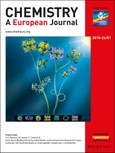
D. Nachtigallová, A. Antalík, R. Lo, R. Sedlák, D. Manna, J. Tuček, J. Ugolotti, L. Veis, Ö. Legeza, J. Pittner and R. Zbořil, "An Isolated Molecule of Iron(II) Phthalocyanin Exhibits Quintet Ground-State: A Nexus between Theory and Experiment," CHEMISTRY - A EUROPEAN JOURNAL, vol. 24, iss. 51, pp. 13413-13417, 2019.
DOI: 10.1002/chem.201803380, IF = 5.16
Abstract: Iron(II) phthalocyanine (FePc) is an important member of the phthalocyanines family with potential applications in the fields of electrocatalysis, magnetic switching, electrochemical sensing, and phototheranostics. Despite the importance of electronic properties of FePc in these applications, a reliable determination of its ground‐state is still challenging. Here we present combined state of the art computational methods and experimental approaches, that is, Mössbauer spectroscopy and Superconducting Quantum Interference Device (SQUID) magnetic measurements to identify the ground state of FePc. While the nature of the ground state obtained with density functional theory (DFT) depends on the functional, giving mostly the triplet state, multi‐reference complete active space second‐order perturbation theory (CASPT2) and density matrix renormalization group (DMRG) methods assign quintet as the FePc ground‐state in gas‐phase. This has been confirmed by the hyperfine parameters obtained from 57Fe Mössbauer spectroscopy performed in frozen monochlorobenzene. The use of monochlorobenzene guarantees an isolated nature of the FePc as indicated by a zero Weiss temperature. The results open doors for exploring the ground state of other metal porphyrin molecules and their controlled spin transitions via external stimuli.


